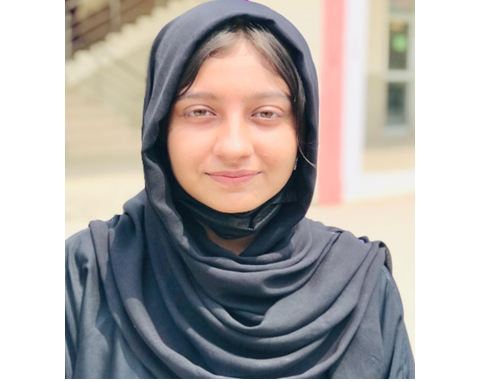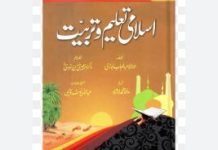Alishba Usman
Pakistan’s emergence as the world’s first Islamic nuclear power on May 28, 1998, marked a defining moment in its history and the geopolitics of South Asia. The thunderous detonations in the Chagai hills of Balochistan, commemorated annually as Youm-e-Takbeer (Day of Greatness), were not merely scientific feats but profound assertions of national sovereignty, technological brilliance, strategic resolve and Islamic identity. This journey, driven by acute security imperatives and national aspiration, transformed Pakistan into the seventh nuclear-armed nation and cemented its place as a pivotal strategic actor.
Pakistan’s nuclear ambitions were fundamentally forged in the crucible of regional insecurity and conflict with India. The early Cold War alignment with the United States, formalized through the Mutual Defense Assistance Agreement (1954), provided crucial military modernization, training and access to Western alliances like SEATO and CENTO. While this bolstered conventional forces in the 1950s-60s, it also exposed Pakistan to the realities of global power politics and the symbolic weight of nuclear capability. However, two seismic events crystallized the absolute necessity of a nuclear deterrent:
India’s first nuclear explosion shattered the regional strategic balance. For Pakistan, already scarred by three wars (1948, 1965 and 1971) with its larger neighbor, it represented an existential threat. Conventional military parity was rendered insufficient. The loss of East Pakistan (Bangladesh) was a devastating military and psychological blow. It underscored Pakistan’s vulnerability and convinced its leadership, particularly Prime Minister Zulfikar Ali Bhutto, that nuclear weapons were essential for survival and preventing future dismemberment. Bhutto’s famous declaration, We will eat grass, even go hungry, but we will get our own nuclear bomb, became the rallying cry. He established the Pakistan Atomic Energy Commission (PAEC) and laid the institutional groundwork.
Beyond immediate security, motivations included deterrence (making aggression prohibitively costly for adversaries), restoring the regional power balance tilted by India’s test and achieving national pride and technological prestige particularly the aspiration to become the first Muslim nation to possess nuclear weapons. The path to nuclear capability was arduous, conducted under a shroud of extreme secrecy and against formidable external pressure. The 1974 test triggered international non-proliferation efforts, leading to technology embargoes, heavy international scrutiny and intelligence surveillance. Pakistan faced diplomatic isolation and severe resource constraints. Despite these obstacles, a network of patriotic scientists, engineers and military strategists worked relentlessly. Early initiatives benefited from peaceful nuclear programs like the US Atoms for Peace and training collaborations. Key institutions like the Atomic Energy Research Organization (1954) and the PAEC were crucial. The scientific effort was spearheaded by figures likeDr. Munir Ahmad Khan (PAECChairman),Dr. Samar Mubarakmand (nuclear physicist overseeing the tests and missile tech) and Dr. Ishfaq Ahmad (prominent PAEC physicist). However, the program gained decisive momentum with the arrival of Dr. Abdul Qadeer Khan in the mid-1970s. His expertise in uranium enrichment technology, often controversially acquired, earned him the title father of Pakistan’s nuclear program and provided a viable route to a fission weapon. This development was not merely technical; it was deeply political, ideological and nationalistic. Successive governments, military and civilian, prioritized the program despite economic weaknesses and international condemnation, viewing it as the ultimate guarantor of security against India and a symbol of national resolve.
The catalyst for testing came in May 1998 when India conducted five nuclear tests, escalating regional tensions to a critical point. Facing immense domestic pressure and strategic imperative, Prime Minister Nawaz Sharif authorized Pakistan’s response. On May 28, 1998 (Chagai-I) andMay 30, 1998 (Chagai-II), Pakistan detonated its nuclear devices in the Ras Koh Hills. These tests demonstrated. The success was immediate and profound. Pakistan had unequivocally joined the nuclear club, becoming the 7th nuclear power globally and the sole nuclear-armedIslamic state. Pakistan immediately framed its capability as purely defensive, rooted in the doctrine of minimum credible deterrence. The weapons were presented as essential to deter Indian aggression, ensure a strategic balance in South Asia and prevent large-scale war a lesson starkly learned from 1971. The emphasis remains on maintaining sufficient capability for defense, not aggression or dominance.
For the Islamic world, Pakistan’s achievement was unprecedented. It shattered perceptions of technological inferiority and dependence, proving that a Muslim-majority nation, despite limited economic resources and political instability, could achieve technological parity with global powers. Domestically, it ignited nuclear nationalism – a potent unifying force celebrated annually on Youm-e-Takbeer, honoring the sacrifices of scientists, the military and leadership and serving as a powerful symbol of sovereignty, scientific achievement, strength and unity for Muslims worldwide. It reshaped the Islamic identity in global geopolitics – projecting capability, pride and security.
The global response was swift and severe. Pakistan faced economic sanctions (US, Japan, EU), suspension of aid and trade agreements and short-term diplomatic isolation. However, the strategic landscape, particularly post-9/11, forced a recalibration. Global powers gradually began to accept Pakistan’s nuclear reality. Pakistan managed to maintain crucial alliances, especially with China, navigate relations with the US and retain strong ties within the Muslim world. The scientific triumph, utilizing indigenous techniques and developing secure facilities and command systems, became a source of enduring national pride.
Pakistan’s nuclear status undeniably strengthened its defense posture, provided a powerful deterrent and fulfilled a deep-seated need for national and Islamic prestige. However, the journey also invites critical reflection. The program was intensely elite-driven, prioritizing military strength and strategic parity, often at the expense of broader social welfare and economic development. In the last, I would like to express my heartfelt gratitude to Dr. Muhammad Akram Zaheer for his invaluable support and encouragement in guiding me to write an insightful write-up. His unwavering motivation, constructive feedback and deep understanding of the subject matter played a vital role in shaping my ideas and strengthening my research. It was through his mentorship that I found the confidence to explore this topic with depth and originality. I am truly thankful for his generous help and academic inspiration.
Alishba Usman
Student of DPT University of Okara

















